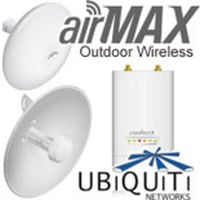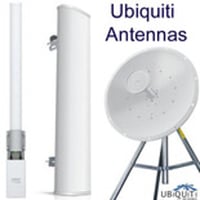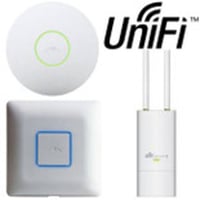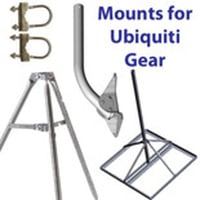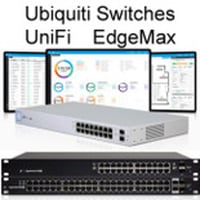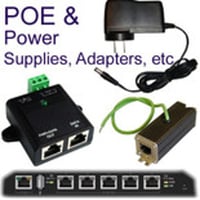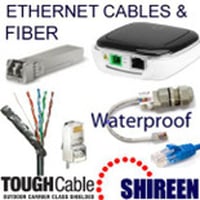10/100 POEs: Low Cost
Power over Ethernet Applications & Technology
POE technology enables Ethernet cabling to transfer electrical power as well as network data to devices. This means that rather than having to install separate network and power connections and cabling a single cable can carry out both functions.
Network cables consist of several wires arranged as twisted pairs. Some of these wires are used for data transfer, but spare pairs are unused in certain types of cable. The spare pairs are used to deliver power concurrently to the data transfer. The power is injected at between 44 and 57 Volts of direct current. If this voltage is directly applied to equipment that is not PoE compatible it can damage it, therefore a PoE switch or injector is used to protect incompatible devices from the flow of current by using a low voltage signature detection process, or test of compatibility before driving current to a connected device.
PoE is advantageous because of the savings in installation and maintenance time and also the cost of the cables which also do not require installation by an electrician as they are network cables. PoE also makes installing devices like cameras much more flexible as they can be located where needed without reliance on an electrical outlet. PoE technology is also responsive to network demands and resilience against overload or underpowering. This makes it very scalable, with upgrades or expansion of networked devices being easy to install.
PoE is used for applications including:
- IP cameras and CCTV are common applications with PoE affording multiple cameras to be networked and easily repositioned when needed.
- VoIP phones are powered by PoE meaning they can be plugged into a network socket much like an analog phone.
- Wireless networks can use POE for the installation of local or wide area networks and RFID systems in remote or poorly accessible locations.
PoE for WiFi Routers
You can power your WiFi router using an AC/DC adapter. Most of them need 5 volts to 18 volts. However, the best way to power your WiFi router is through the POE (Power over Ethernet) injector. Power over the Ethernet simply means that your wireless router will be receiving power through the Ethernet cable.
Advantages of using POE for your WiFi Router include:
- Flexibility. When your power your WiFi router through the Ethernet cable, you will not be limited to the power access points. You can locate your WiFi router anywhere you want without worrying whether it’s close to a power point or not.
- It save time and cost POE will reduce the time and cost of installing electric cables that will supply your WiFi router with the power it needs. You don’t need a qualified electrician to fit Ethernet cables.
- Improves safety: POE is designed to protect your equipment from overloading and incorrect installation.
- Reliability: POE originates from a universally acceptable source that is centrally located. It can easily be backed using uninterruptible power supply as well as controlled easily.

